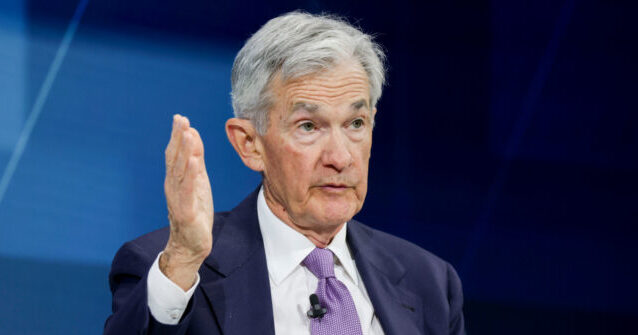On Wednesday, the Federal Reserve made a widely anticipated decision to cut its benchmark interest rate for the third consecutive time, bringing it down by a quarter of a percentage point. This adjustment establishes the new target range for the federal funds rate at 4.25 percent to 4.50 percent. Since initiating this cycle of rate cuts in September, the Fed has reduced the rate by a total of 100 basis points, effectively lowering borrowing costs in an effort to stimulate economic growth amid various uncertainties in the market. The Fed’s actions reflect a broader response to shifting economic conditions, particularly in light of developments stemming from President-elect Donald Trump’s election victory.
With Trump’s electoral success, shifts in the economic landscape have begun to emerge, as evidenced by a notable increase in business, investor, and consumer confidence. Many stakeholders across various sectors are optimistic that Trump’s anticipated policies, including reforms in tax codes and deregulation, could foster an environment conducive to economic expansion. Expectations now hinge on the administration’s potential to create jobs and increase overall economic productivity, which were central themes in Trump’s campaign rhetoric. This optimism is a critical factor driving market sentiments, underscored by the Fed’s decision to lower interest rates.
However, the challenges posed by Trump’s proposed tariff strategies complicate the Federal Reserve’s mandate to manage inflation effectively. Economists are divided on how these tariffs may impact prices domestically. While some predict that increased tariffs could escalate inflationary pressures, others suggest that such changes might only induce a temporary rise in the prices of specific imports. As a result, it remains to be seen whether tariffs will lead to a wholesale increase in inflation that necessitates a more aggressive monetary policy response from the Fed. The overall environment marked by these tariffs could introduce volatility, compelling careful monitoring by financial regulators.
Moreover, Trump’s immigration policies and their implications for labor costs have sparked additional debate among economists. A crackdown on illegal immigration may lead to increased labor costs, as the displacement of undocumented workers could elevate demand for domestic labor, thereby driving up wages. However, numerous experts contest this view, arguing that immigrant labor does not significantly depress wage levels for U.S. workers. This discourse illustrates the complexities involved in predicting the economic consequences of policy changes that stem from the new administration, particularly as they relate to the labor market and consumer pricing.
The Federal Reserve’s most recent decision to cut rates was not without dissent, as evidenced by Cleveland Fed President Beth Hammack’s vote against the move. Hammack, along with eleven other members of the Federal Open Market Committee, debated the merits of either maintaining the current rates or implementing a reduction. Ultimately, the majority, including Fed Governor Michelle Bowman—who had previously voted for a quarter-point cut in November but opposed a more significant half-point reduction in September—supported the latest cut. This divergence within the committee highlights the complexity and differing perspectives concerning the economy’s trajectory in an uncertain political landscape.
In conclusion, as the Fed continues to navigate rate adjustments amid evolving economic dynamics brought on by the incoming administration, various factors—including trade policy, labor market implications, and overall growth expectations—create a multifaceted environment for economic forecasting. Stakeholders remain watchful of potential rate changes and how shifts in policy direction may further influence both micro and macroeconomic conditions. The convergence of heightened confidence and looming uncertainties underscores the importance of the Fed’s role in ensuring economic stability through responsive monetary policies while adapting to the shifting landscape shaped by the new presidential administration.

